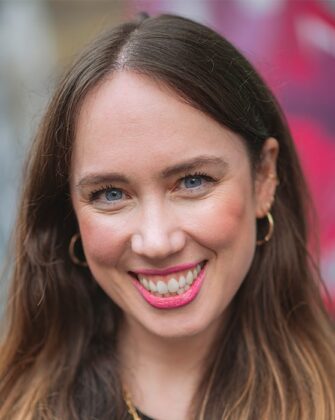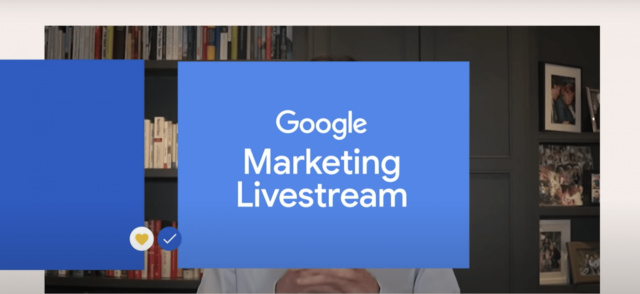Last year, the three-day conference was held online – for obvious reasons. But it was back with a bang this September and we couldn’t be happier.
Several members of our team, spanning across PR, Content, Social, and Paid Media all made the long trip down to the south coast to take in the event, catch up with old friends, have a tipple or two (or three), and discover what some of the industry’s leading figures had to say.
Here, and having had time to digest a busy couple of days, in this blog, we have picked out and compiled our top 10 takeaways from this year’s Brighton SEO in the hope you will find them just as insightful and interesting as we did…
Changing Role of Digital in Public Health Comms
Anna Murphy, Senior PR & Content Marketing Consultant
As a Brighton SEO first-timer, I loved having access to discussions around different sectors and approaches. My favourite talk of the conference was delivered by Ranjeet Singh Kaile, Stakeholder Engagement and Public Affairs at South London and Maudsley NHS Foundation Trust, which is the largest provider of mental health services in the country.
Ranjeet talked about the changing role of digital in public health communications, highlighting the way that both internal and external comms had had to evolve during the height of the pandemic and the various challenges that came with life in lockdown. From having to impart important information relating to the pandemic to helping to combat loneliness within their community of over a million people, this talk explored the emerging changes to society and the central role that digital has in saving people’s lives: a far bigger challenge to one that I usually come across in my day job…
Ranjeet explained the challenges that he and his team had faced, especially from the wave of fake news, using both SEO to handle misinformation and various different methods of digital comms to mitigate this rise.
From the first pandemic, Ranjeet then explored “the second pandemic” of mental health and loneliness. He explained how around one in four adults in the UK said they had feelings of loneliness in the “previous two weeks”, with the proportion of people reporting they were coping well falling slowly and steadily, from 73% in April 2020 to 62% in June/July 2021. Using digital, comms and other practical initiatives, such as gifting former NHS equipment to people who otherwise had no way of accessing the internet and the virtual communities that had been set up to support them, Ranjeet’s talk was delivered with such care, eloquence and razor-sharp wit that it ended the conference on a high for me.

Improving Online Performance
Tom Bestwick, PR & Content Marketing Consultant:
I really enjoyed this Tom Wells’ chat during the first half of the SEO Showcase.
And while it took on more of a Technical SEO discussion, it did provide some handy tips on improving online performance.
Specifically, Tom’s chat focused on website performance. Early doors, he delivered an eye-popping statistic, stating that only one in three websites have an LCP (Largest Contentful Paint) of more than 2.5 seconds – Google’s benchmark.
We also know that a significant website ranking factor is its load speed.
So, after scaring us all half to death, Tom finally revealed his top five tips for improving online performance. Here goes:
- Optimise your pages for loading speed – the average website is far too heavy. To avoid this, reduce the overall size of web pages by optimising images and reducing the size. Finally, avoid downloading new web font and loading massive overview pages
- Do you really need that app or plug-in – really, go ahead and ask yourself the question. A number of them hinder a website’s performance so take the time to delete any that you don’t truly need
Identify page critical elements and optimise what you really need – as part of this, compress images and videos. WebP by Google can reduce image size by over 25% without losing quality - Consider using a CDN (Content Delivery Network) – these can dramatically improve site load times.
- Speak with an SEO expert – well, it wouldn’t be Brighton SEO without us telling you the importance of speaking with an SEO expert
Newsjacking can add longevity to your ‘hero’ campaigns.
The penultimate talk of our time on the south coast, titled how to create an opportunity-first approach to Digital PR for more consistent results, by Jane Hunt.
While creating full content marketing campaigns is something we enjoy getting stuck into here at Hallam, I was left intrigued by how newsjacking – both proactive and reactive – can be used to support a campaign over a prolonged period of time.
It’s common that once such a campaign is built, it will undergo several rounds of outreach to different publications – across national, regional, local, and trade – with the aim of amassing as much coverage and juicy links as possible.
That said, one aspect of PR that is easy to neglect with these campaigns is newsjacking and, actually, how combining a proactive and reactive approach can give it a much-needed boost and prolong its ability to draw in results.
In this particular chat, it was newsjacking that helped beat client KPIs far quicker than expected. Below are three helpful tips that we took away:
- Google alerts will keep you ahead of the game – set up alerts for your client or business, keywords, and competitors to ensure you’re fully aware of what coverage and links are being achieved for what
- Consume all the news – this is easier said than done when life is so busy. That said, Alexa is always on hand to read headlines, while international briefings can also be sent directly to your inbox
- Create a bank of content – by having a bank of content that is signed off and ready to be sent, you will be able to react to swift breaking stories at the drop of a hat, giving you a head start on your competitors also trying to break in on a story
Instagram SEO tactics to be seen
Hannah Tomaszewski, Content & Social Media Specialist
As a social media specialist heading to my first ever Brighton SEO, I was surprised to see a whole morning’s worth of talks on social media and so headed off to see what I could learn. The answer? A lot!
The first talk I headed to was from Freya Jones, who was the perfect speaker to start my day off and had some great insights into improving your brand’s visibility on Instagram using techniques we’d usually reserve for SEO.
Here’s what I learnt:
- You no longer need hashtags to search for people or accounts: instead, it’s all about what you have in your username and bio, so make them count
- Instagram posts have a shelf life of around 25-40 seconds before they ‘disappear’: the chances of your post being seen depend on a number of different factors, such as your audience’s previous interactions, what they regularly search for and whether or not their network (of friends or followers) have engaged with your content. So, the best way to be seen is to create content that people want to engage with because, if not, your content will easily be lost
- We finally have an answer for the age-old question of where hashtags should be! To be picked up by the algorithm, hashtags have to be included within the caption, rather than in the first comment
- Image alt tags are key: not only is this crucial for visually impaired audiences, but you can also add your competitor’s names and #hashtags within the alt tag to improve visibility, and to be found alongside relevant content
Lead generation on LinkedIn
Next up was Kineta Kelsall, Senior Social Media Director (Training) at Jellyfish, who was super engaging and spoke about how to generate leads from LinkedIn.
Essentially, she said, it’s all about value exchange – to get something back, you need to offer something in the first place, whether that’s educational, inspirational or simply something that interests your audience. She spoke about how many people get LinkedIn wrong and are much too promotional – you should only ever focus 40% of your time and content on sales activation, and the remaining 60% on brand building and awareness.
After asking the room whether anyone would give her their number (cue an awkward silence) she then talked about how, as people, we hate the hard sell and being directly asked to part with our personal details or information. After all, you wouldn’t just walk up to a stranger on the street and ask them out, would you? Instead, leads are much more likely to be open to it if they know the brand. Here are her top tips for content creation on LinkedIn to generate the maximum number of leads, and to better connect with your target audience:
- Be relevant on a lifestyle level
- Be authentic and a natural fit between brand and topics
- Be committed to the cause
- Be consistent as it builds trust

5 steps to executing a successful Digital PR campaign
Cormac Clarke, Digital PR Executive
Like Anna, I too am a Brighton SEO first-timer and what an experience it was. Apart from my drunken exploits after hours (which you can read about below by the way), BrightonSEO was packed full of interesting and insightful talks from some of the brightest minds in the industry, and I had a front-row seat.
I am new to the world of PR and SEO having only joined Hallam in May, so events like BrightonSEO were a perfect opportunity for me to network with some of the best in the field and learn as much information as possible along the way.
The first PR talk of the day was given by Tom Mansell from Croud and he discussed executing a successful Digital PR campaign.
1) Align your internal teams
Like most things in life, planning for a Digital PR campaign is absolutely essential and as such, all key stakeholders should be involved from day one.
When plotting the course for your Digital PR campaign, starting with a kickoff meeting is always good practice. In this meeting, you and your team will be able to set out KPIs early, and allow you to establish what you are looking to achieve, who your target audience is, and if there are any technical limitations.
To avoid doing what has been done before, it’s important to check this during the planning stage to prevent you and your team from wasting too much time going in the wrong direction
And finally, in summary of what you have planned, outline the end to end process from ideation to outreach. This will allow all stakeholder groups to be clear on the way forward.
2) Think of your target audience: just because you think it’s good, doesn’t mean a journalist will
Newsworthiness – The crux of any news story, it needs to be just that – news. Your idea needs to be something that will make your target audience click that link. You and a journalist share a common goal; you both want people to view that content, and it’s your job to make that happen. A good news-worthy angle will help you do that.
Brand Relevance – Create content that the client’s brand has authority speaking about but without selling that product or service.
And what makes a good Digital PR campaign? It’s a mix of both. You want what is called ‘the sweet spot’, content that is newsworthy and engaging while also being relevant to your clients brand and tone of voice.
Validation of your ideas – Data is a great way to validate your Digital PR campaign. There are a variety of potential data sources you can utilise for your campaigns:
- Internal client data
- Paid surveys
- Scraped data
- Statista
- ONS
- When it comes to data-led campaigns, it is vital that you ensure your data is relevant, accurate and fits in well with your campaign.
3) Bringing your idea to life
Before you get started with delivering your campaign, make sure you have everything you need.
As discussed earlier, it’s important to be aware of any technical limitations that can prevent you from delivering your campaign.
Brand guidelines is also something to be wary of as it is essential to getting your idea signed off by the client.
At this stage, it’s also good practice to ensure you have everything you need from all stakeholder groups. Have you got the brand assets from the client? Waiting on graphics from creative? Now is the time to get your ducks in a row and get what you need.
Feedback is key throughout the process, from ideation to outreach. Make sure you are keeping stakeholder groups informed and allowing an open channel for feedback as this will only improve your campaign.
4) Get it picked up
Sounds simple enough, right?
Having a solid outreach strategy is vital to getting your content picked up.
Make sure you liaise with your client’s internal marketing/PR teams to ensure no additional content is being outreached at the same time.
Talk with your colleagues and welcome feedback on email content and discuss how you want to target specific publications.
5) Measuring success
The power of high-quality backlinks should not be underestimated in measuring success for your Digital PR campaign.
The purpose of building high-quality links:
- Build trust
- Improve visibility
- Improve rankings
But, as important as quality links are, they are not the be-all and end-all.
There are a variety of metrics you can use to measure the success of your campaign:
- Traffic – Are more people visiting your client’s site? How well is the post performing on social media or is social engagement boasting strong numbers?
- Links – Has your campaign landed in a high-DR ranking site/publication? Have you got a variety of links across national, regional and/or trade media publications?
- DR/DA Improvements – Has your DR/DA improved since the start of your campaign?
In summary, BrightonSEO was quite the experience and not one I will forget. For anyone in PR who hasn’t been to BrightonSEO yet, I simply cannot recommend it enough. I can guarantee you will come away from the conference with a better understanding and a wealth of new information on PR, SEO and how the two can work together.
Pay for conversions with Google Display
Molly Watters, Strategist
I joined the PR, Social and Content team for our trip to Brighton SEO and I aimed to expand my knowledge gaps by attending talks in SEO and Paid Media. Rashed Khan’s talk on pay per conversion was very interesting, especially to see how this campaign type has actually worked in real-life examples, as it’s definitely a campaign set up we are slightly nervous to opt for or to encourage clients to invest in.
Rashed had a really mixed bag of experiences with pay per conversion for display. In some instances, he had seen an increase in search conversions as well as an increase in display conversions when testing this campaign type: however, that seemed to be the utmost positive result.
Generally speaking, he stated that Google’s algorithms took a long time to start showing results – up to 9 months in fact! This might mean seeing as low as 0 conversions, or maybe around a handful to start with (of course, your conversion tracking must be set up perfectly before testing this and no shared budgets are allowed). Other criteria to pay per conversion include the account must have 90 conversions in the last week, and the Target CPA is a maximum of £200. Luckily, if you’re not eligible for this campaign type, you just won’t be offered it in the Google Ads interface anyway.
When choosing a display campaign type, you must be conscious of your wider strategy. If you want to use display for brand awareness purposes then pay per conversion is pointless. Your impressions will largely decrease and if you see low conversions, the impressions will drop. Rather, this campaign type is definitely for lower-funnel activity, whereby the client definitely wants to drive conversions from display as their main aim with the channel. If this is the case, make sure you only do this for high-spending, high-performing, fully-optimised and perfectly tracked Ad accounts!
Proof that Google My Business posts drive engagement and sales
David Whatley’s talk on local SEO and Google posts taught us that Google posts should be an essential part of your wider SEO strategy. Whether it’s updates, events, products, offers – there are local SEO benefits to Google posts. They are highly relevant for retailers and basically a free advertising method for your business.
They’re also a conversion touchpoint for users who are searching with intent, whereby that online search will often result in an offline sale. This is especially relevant for services such as hairdressing, wedding dress shops and the beauty industry. Google allows you to track the open rates and various trackable buttons of these posts.
One huge benefit of Google posts is that they remain relevant as users shift more towards the use of voice search. With mobile voice searches, you can view the top three listing results, so by adding great visual content through posts to your listings, it allows users to find you above your competitors.
Our Top Tips for Brighton SEO 2022

You’ve heard our event coverage… but what about the real insider info? If you’re planning on going to Brighton SEO 2022, here are our top tips for next time.
Anna: “If, like me, you rely on lists to keep you on track whether that’s at work, at home, or in – erm – life, then definitely download the Brighton SEO app. All the talks are listed, so you can create your own personal schedule – very helpful when there’s so many things going on!”
Tom: “For anyone that loves a coffee and has never been to Brighton SEO before, you’ll be pleased to know that the Odeon right next door to the conference has a Costa. I can’t tell you how relieved I was!”
Anna: “If you’ve got the opportunity to stay for night at Brighton SEO 2022, I would 100% recommend going to one of the Brighton SEO parties; this year, we attended a karaoke night that was backed by a live band. Yes we took part, no none of us were any good and let’s just say that I’ll never be able to hear Islands in the Stream in the same way again!”
Tom: “Following that, don’t wear a light grey polo shirt when you’re doing karaoke. You’re going to sweat a lot and look a bit of a mess.”
Cormac: “The live-band karaoke was an absolute MUST but, as fellow Westlife fans will appreciate, they didn’t have any of their hits. A reminder to us all of the importance of being able to adapt…”
Tom: “Brighton has a lot of quirky bars and restaurants and clubs, but Popworld will always remain supreme – no matter what part of the UK you’re heading to.”
Cormac: “Bring more than one pair of trousers, unless you want to risk taking one pair, going on a night out and tipping garlic mayo down yourself after karaoke then smelling of garlic for the rest of the conference. At least I got some good Twitter content out of it…”
If you have any questions don’t hesitate to get in touch with us.






